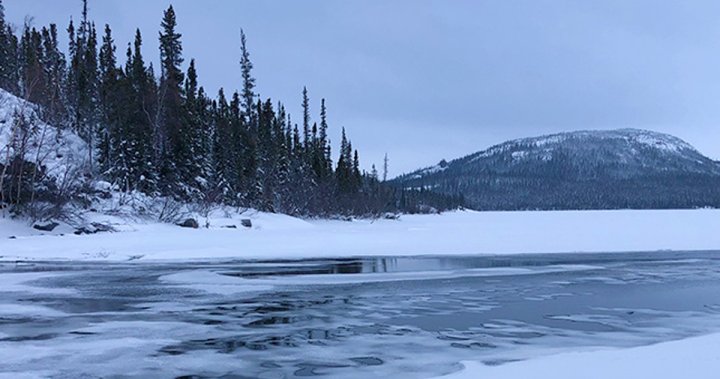
A Wilfrid Laurier University professor and her team recently travelled to the Northwest Territories to help install lifesaving technology on a lake vital to those who reside in a remote village.
Łutsël K’é, a small village which is home to around 300 people, is located on Great Slave Lake and is only accessible via air, boat or ice.
Many of those that live in the First Nations community rely on hunting as a food source and need to travel across frozen waterways to reach hunting grounds, according to a release from Laurier University.
It says that ice conditions across the territory have been changing as northern areas of Canada are warming at a rate of three to four times faster than the rest of the planet.
“What we’ve noticed in the last 10 years is that it’s taking longer and longer for our big lake to freeze, and we use that lake quite extensively in the winter months,” stated Iris Catholique, manager of Thaidene Nëné, a local environmental group.
“Waiting longer and longer for the lake to freeze impedes our ability to access our traditional hunting grounds and provide for our people.”
The university says that the issues have left snowmobiles to get stuck in the ice or sliding into the water, and in 2019, it is believed that three residents who went missing had gone through the ice while attempting to traverse Great Slave Lake.
This led local officials to contact Laurier professor Homa Kheyrollah Pour, who also serves as Canada Research Chair in Remote Sensing of Environmental Change.
As part of their research, Kheyrollah Pour and her students focus on the cold region water systems and how they are reacting to climate change.
In January, Kheyrollah Pour and her team travelled to Łutsël K’é to work with Thaidene Nëné to install sensors on Great Slave Lake which will allow them to monitor ice thickness on the body of water.
The recordings will occur every 15 minutes, allowing area residents to know when it is safe to travel on the lake.
Arash Rafat, a grad student at the school, also spent a week in the remote village helping locals install the sensors as well as providing instruction on how to operate them.
“The Guardians selected locations on Great Slave Lake based on safety concerns and we travelled there together to teach them how to install the sensors and collect measurements,” says Rafat.
“We talked about the science behind the technology and paired it with what the Guardians already know about the ice and the land.”
© 2023 Global News, a division of Corus Entertainment Inc.
















